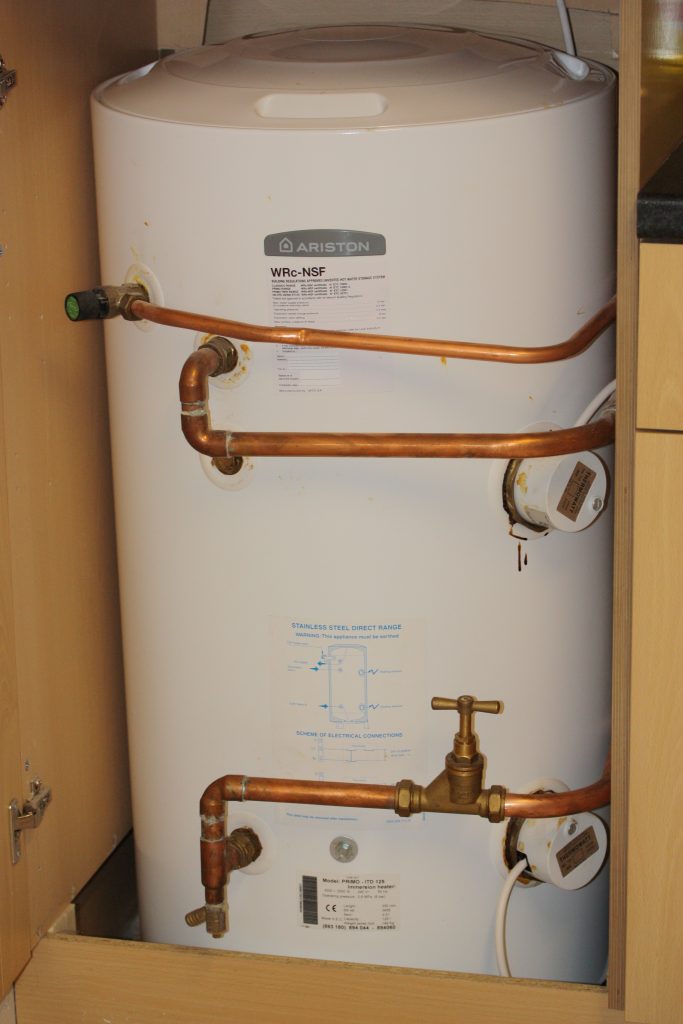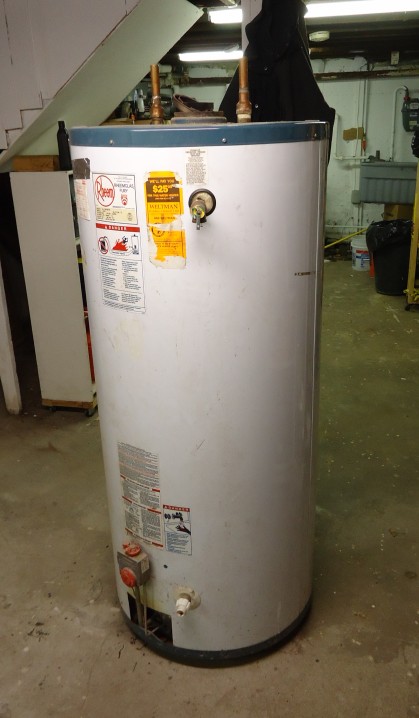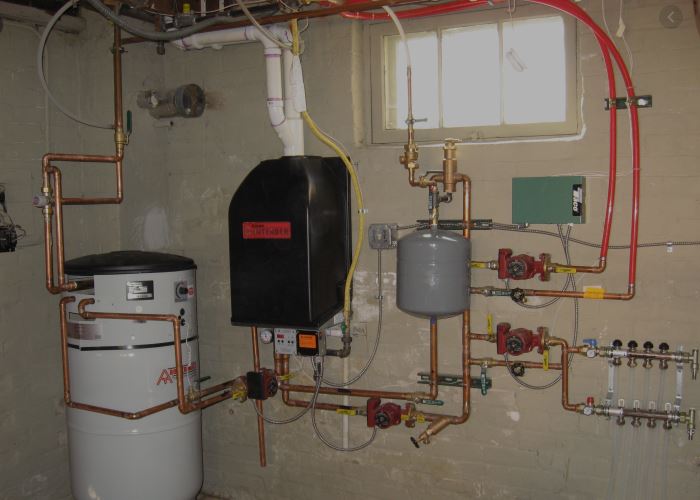Contents
Electric hot water tank: operating principle
Composition of the electric hot water tank
Electric hot water tank: 2 types of resistances
Electric hot water tanks: their evolution
Price of electric hot water tanks
The electric hot water tank, often called “electric water heater,” has been the standard solution for domestic hot water production until the mid-2010s. New thermal regulations now condemn this domestic hot water mode for new houses because of its electricity consumption.
Therefore, it is reserved for the replacement market in the existing and renovation, for which it is still authorized.
Electric hot water tank: operating principle
An electric immersion heater heats the water in a watertight tank connected to the hot water circuit. A thermostat switches off the resistance at the maximum temperature and switches it on again at the low temperature.
The opening of a tap has 2 immediate effects on the tank:
– drawing hot water from the upper part of the tank (area with the highest temperature, because lighter, hot water rises;
– filling in the lower part (where the heating resistance is located) until the pressures are equalized.
Note: the electric hot water tank is an absolute domestic hot water accumulator, allowing the heating and storage of water during off-peak periods when electricity is cheaper. It then restores it throughout the day.
Composition of the electric hot water tank

Autonomous, easy to install, requiring little maintenance, the tank is composed of:
– an enameled or stainless steel tank;
– a layer of insulation, often in polyurethane foam;
– a lacquered protective body (jacket);
– an electrical resistance;
– a thermostat to regulate the water temperature;
– a cold water inlet;
– a hot water outlet;
– a hydraulic safety group;
– possibly an anti-electrolysis anode.
Good to know: electric water heaters are available for vertical or horizontal installation, hung on the wall, on the ceiling or a base, on the floor.
Electric hot water tank: 2 types of resistances
1. Electric hot water tank with armored resistance
The armored resistance, also called “immersion heater” or “thermoplastic resistance,” is the usual heating element of the entry-level electric hot water tank.
Better adapted to regions where the water is not very hard, the stainless steel sheath covering it is in direct contact with the water, which gives it maximum heating power.
Unfortunately, this quality does not last very long, as the heating surface quickly becomes covered with a thick layer of scale that seriously compromises temperature exchanges. Every day that passes, it takes longer to heat the water, and the amount of hot water available decreases. Energy costs increase in the same proportion.
As an additional inconvenience, the heating phase can be accompanied by rattling, bubbling, and other noises that are quickly disturbing.
Good to know: one solution is to descale the heating element regularly. This is time-consuming and costly maintenance, as you must empty the tank before disassembly. The same inconvenience is encountered when replacing the resistance.
2. Electric hot water tank with soapstone resistance
The steatite resistance is a refractory terracotta heating element. It is not in direct contact with the water but inserted in a dry and watertight cylindrical sleeve, welded to the wall of the tank. Its larger exchange surface allows for faster heating.
The tank is equipped with an erodible anti-corrosion magnesium anode. This anode has a lifespan of between 3 and 5 years, depending on the aggressiveness of the water.
This assembly eliminates definitively:
– the obligation to empty the tank to intervene on the resistance;
– the risks of corrosion in case of acid or aggressive water;
– the risks of corrosion in case of acidic or aggressive water; the noise of operation.
It reduces the risk of deterioration due to scaling.
Super protection for ACI, AEP, and HPC water heaters

“ACI,” “AEP,” and “HPC” are trade names for high-end soapstone water heaters with advanced insulation and a titanium (or mixed titanium/magnesium) anode, coupled with a current generator.
This device protects against corrosion and dramatically reduces scaling. It is designed to extend the life of the tank significantly.
Note: this type of electric hot water tank also benefits from reinforced insulation.
Electric hot water tank: their evolution
To meet the standards in force and to come, the manufacturers have evolved in their technique of domestic hot water production.
The tanks operate on the same principle but with dual-energy. The electric resistance has become a complementary energy source to renewable energy, used in the routine.
The primary source of calories now comes from
– an air/water heat pump for thermodynamic water heaters;
– solar panels for electro-solar water heaters.
Price of electric hot water tanks
The price of electric hot water tanks varies according to electric resistance, brand, and product distributor.
For a 300-liter vertical unit on a base, ready to install, you should count
– immersion heater: between $350 and $500;
– Soapstone water heater: between $500 and $800;
– ACI, AEP, or HPC water heaters: between $750 and $950.

